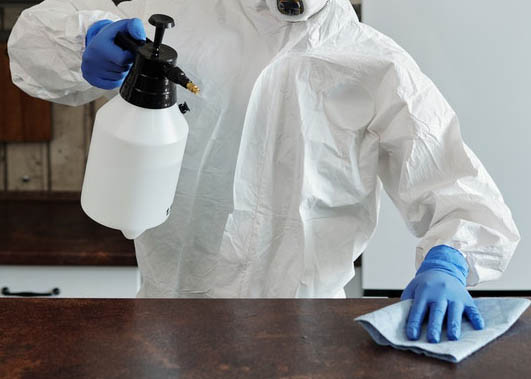I gave a simple breakdown in How to Clean and Disinfect After Panleuk. Now I’m going to talk about specific things that can be difficult to sanitize.
For most “sensitive surfaces” I use accelerated hydrogen peroxide (aka Rescue) and steam. This includes hardwood floors, wood furniture, etc. Of course, I live in a house with four cats and a dog so I don’t have “nice” things.
Bedding
Heavily soiled bedding should be tossed. Otherwise, I usually soak the bedding in a bleach solution for 15 minutes before tossing it into the washing machine on hot. Only fill the washing machine about 2/3 full but use the largest setting to give the material room to move around.
Clothes
I usually soak clothes in Accel solution and then launder as normal. I follow up with my steam cleaner. However, the University of Wisconsin says to “wash in hot water with bleach in a washer that is not overfilled, then dried in a dryer on the highest heat setting.” (Source)
Carpet
Carpet is the hardest surface to clean because it is porous and thick. But, it can be done. The only definitive study that I have found is one that used accelerated hydrogen peroxide. According to the study, “The cleaner was sprayed on to the carpet tile using an aerosol sprayer for 5 seconds or until complete coverage was obtained, and was agitated by using a scrub brush. The cleaner was allowed a 15 minute contact time with the carpet, and then it was extracted with a Tennant carpet extractor (hot tap water only).”
According to UC Davis, “Potassium peroxymonosulfate (e.g. Trifectant® or Virkon) and accelerated hydrogen peroxide(e.g. Accel/Rescue®) … can be used in carpet cleaners on contaminated carpets and furniture (always check first to test for staining).”It is also recommended that when using chemicals on carpet, that you use a higher concentration and a longer contact time. (Source)
You can also use a steam cleaner (like I explained earlier) on your carpet after you are done.
If you have carpet in the room you normally foster, consider getting a piece of linoleum to place over the carpet. I did this after my first panleuk case after I had cleaned the carpet. It gives you an extra layer of protecting in case you didn’t kill the panleuk on the carpet.
Cat Tree
Since a cat tree is mostly carpet, you can follow the instructions listed above. Make sure you soak all the fibers thoroughly. If your cat tree has a lot of wear, consider recovering it or tossing it out.
Crates
Wire crates can be difficult to clean. I recommend using a power washer and large scrub brush. If you don’t have one, consider taking them to a do-it-yourself car wash. Once it is clean, use a garden pump sprayer to coat the entire surface. It’s best to do it while the crate is collapsed so you can flip it over and get both sides.
You may also want to repaint the crate if it is heavily corroded. I attempted this over the summer and had good luck using Rust-oleum Spray Paint.
Plastic crates should be treated the same way. If the crate is older and heavily scratched, toss it or soak it entirely in a bleach solution for at least an hour.
Cloth Furniture
You can use a steamer on your furniture or follow the methods for carpet to do a deeper cleaning (which is necessary if the sick cat had direct contact with it. You may also want to consider covering the furniture afterwards with an inexpensive cover.
Walls & Baseboards
Due to the porous material of both drywall and wood, these can be difficult to clean. If you are concerned disinfecting might not be sufficient, consider repainting them.
For more information, check out my page on How to Clean and Disinfect After Panleukopenia and a complete list of Resources on Panleukopenia Cleaning.
